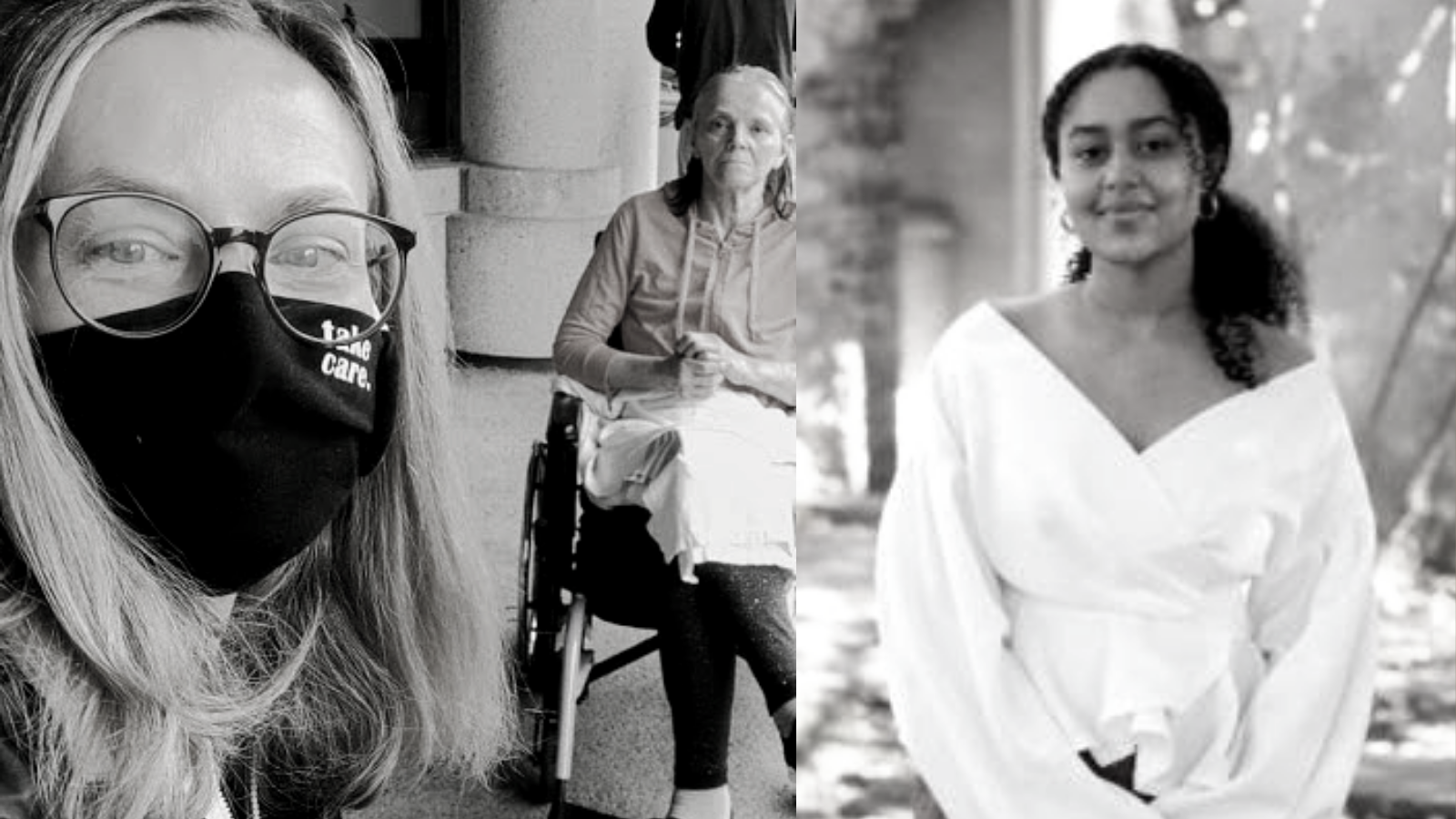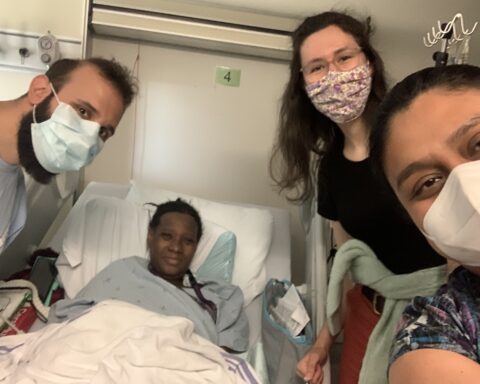Twenty-year-old Iman Adem lives in Toronto with her 70-year-old grandmother, Sayeeda Yousef, and her 22-year-old sister, Yasmin. With her parents in Dubai, Iman and Yasmin oversee their grandmother’s health.
Iman and her family are one among many who live in multi-generational homes, which is becoming more and more common in Canada due to unaffordable housing prices, lack of affordable child care and inadequate long-term care homes, as NCM has previously reported. According to 2016 Census data, there was an increase of 37.5 per cent in multi-generational housing from 2001 to 2016.
Misinformation and Other Barriers
Sayeeda regularly watches Canadian news, although, with Somali being her first language, she only speaks broken English. During the first few months when news of COVID-19 broke, she would look to her two granddaughters for help with translation.
“‘What is going on?’ she would ask,” Imam recalls. “In the beginning, there was a lot of translating that we would have to do. It was difficult to help her understand what was going on.”
“There were times when we needed to take her to doctor’s appointments, but she refused to leave the house because she was so worried and scared,” she adds.
Iman says misinformation was a difficult barrier to face with their grandmother.
Many ethnic community advocates have noted that language barriers have been an obstacle in accessing information since much of the information released by the Canadian government remains mainly in English and French.
According to the 2001 Canadian Census, the Canadian South Asian community reported more than 75 different first languages.
“Not having that first-hand access to any information added a lot of stress and worry to her. It would have been very isolating if she didn’t have us,” Iman says.
She says that with the pandemic, she’s glad she could keep her grandmother safe and close. “The worst I can imagine would be for her to go through this pandemic alone and without family.”
Iman and her sister both have their first doses, and Sayeeda is fully vaccinated.
LTC living
Laura Rivest-Hartley’s 65-year-old mother, Marie Rivest, is a resident at a long-term care (LTC) facility in Toronto. When she was 63 and living alone, Marie was diagnosed with Alzheimer’s, and doctors made it clear that she would require 24-hour care. Straight away, Laura and her family began the process of looking for a long-term care home.
Like many, there was a long wait-list for a spot in an LTC for them, with more than 200,000 senior citizens in Canada aged 65 and above living in long-term care homes, according to 2016 Census data. After months of waiting, they applied to interim care, which provides a short-stay interim bed if you are currently in hospital, but it requires eventual placement in an LTC facility.
After she was first diagnosed with Alzheimer’s, Marie remained in the hospital for nine months before she was transferred to an interim home in January 2020.
Visiting Restrictions
When she was first transferred, Marie shared a room with one other resident, though as the pandemic raged on and her health declined, she was moved to a private room. Then, in early October 2020, the province announced it would be tightening restrictions on visitor policies at some long-term care homes.
“The initial reaction of myself and my siblings (about visiting restrictions) was actually a positive one because in our minds it was, ‘Oh, good. They’re protecting our loved ones,’” Laura says.
Although she and her family took the news well, coping with the separation was still difficult.
“It was hard, especially because we never knew when we would see our mom again and … because we knew that she was having a hard time coping with it too,” she says.
Restricted and Alone
As weeks and months went on, much of the activities and daily routines for the residents were shut down. Meals were served to residents in their rooms, where they were restricted for most of the day. Any social and recreational programs were stopped.
Then, during the summer of 2020, some restrictions in the home loosened and they began ‘hallway activities,’ where residents would sit in the hallway and partake in activities like bingo or listen to music as a small form of social interaction.
“That was basically the extent of it, until there was another lockdown,” Laura says. “And then, once again, they were confined to their rooms.”
Infected
In December 2020, Marie contracted COVID-19. Shortly after, Marie’s health worsened and she got pneumonia. The interim home quickly caught the signs of her worsening state and did a chest x-ray right in her room, for which she was admitted to the hospital for one night.
“She survived and she was fine,” says Laura. “But I think just that situation goes to show that if she would have been living (with family), you ask yourself, ‘Would she have survived? Would we have been able to spot the signs that she was getting sicker?’”
“With (the home),” she adds, “the best reassurance that we had was that she was being cared for and that she was being monitored.”
Three weeks after being infected, Marie tested negative for COVID-19. She has been fully vaccinated since January 2021.
Residents and staff are tested weekly. The home’s staff regularly provides updates and information surrounding new regulations and COVID-19 cases at the home.
A survey of over 800 participants by the non-profit Angus Reid Institute suggests that overall, Canadians with loved ones in LTCs believe those facilities handled their COVID-19 responses as well as “could be expected” (39 per cent) or “well enough overall” (42 per cent), “while one-in-five say their loved one’s LTC facility failed in its duties.”
More than 15,000 LTC resident deaths account for about two-thirds of all fatal COVID-19 cases in Canada, the survey suggests.
COVID-19’s Toll
While restrictions have been further loosened, Laura says COVID-19 and months of confinement have taken a heavy toll on her mom.
“She really lost a lot of her muscle tone, so she’s much weaker. Now, she walks more slowly and often needs assistance,” she says.
The physical confinement to her room and social isolation has also meant a sudden and rapid decrease of human and social interaction, something Laura says is key to help Alzheimer’s and dementia patients “keep the brain stimulated.” Without it, she says she’s seen her mother “declining.”
“The lack of stimulation, lack of being able to see her family and being able to go outside — I think all of that just really increased the rate at which her Alzheimer’s has progressed,” Laura says.
While both families have unique challenges that come with their living circumstances, in the end, both face institutionalized barriers that prevent our older generations from receiving the specialized kind of care they need and deserve. Whether they are crammed into the family home overrun with multiple generations out of economic necessity, or relegated to inadequate long-term care facilities, our older generations are not finding the support they require.

Reedah Hayder
Reedah Hayder is a journalist based in Toronto and a member of the NCM-CAJ Collective, actively reporting and managing social media. She is a second-generation immigrant and covers community, women's health, education and politics. She currently attends the Ryerson school of journalism and writes for The Eyeopener.




